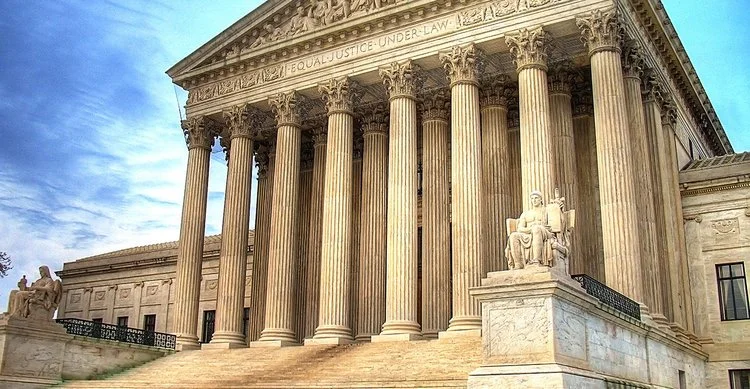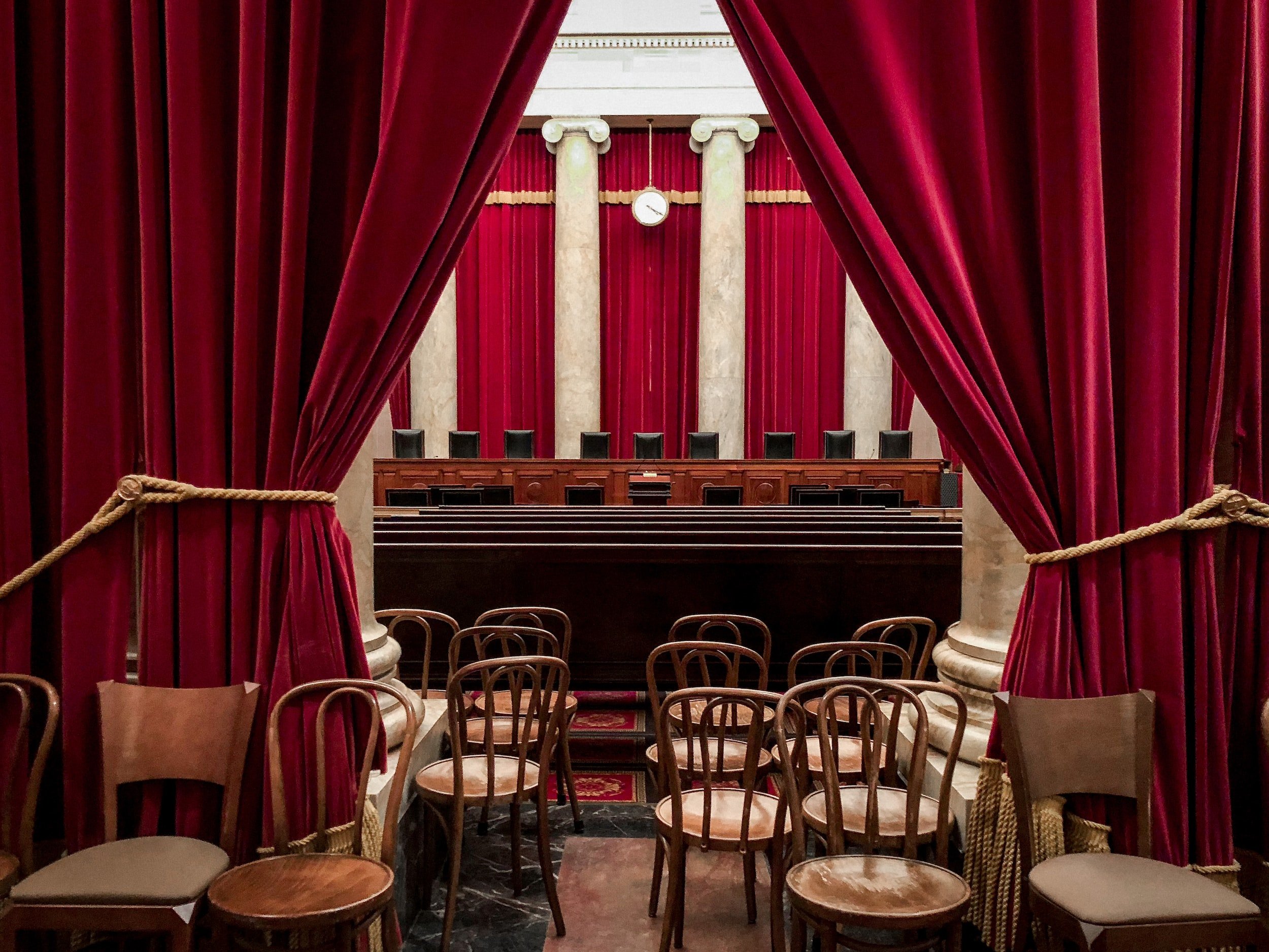Landmark Court Cases Inquiry
Each case comes with tons of visuals, videos, and information so students can learn about its constitutional connection, key facts, constitutional questions, holding, impact of case, connection to other cases, and critical questions. Each case includes a lesson, graphic organizer, and a completed rubric for teachers.
CLICK ON THE THUMBNAIL BELOW TO LEARN ABOUT EACH OF THE 14 LANDMARK SUPREME COURT CASES
Landmark Cases Rubric
Complete this graphic organizer for each case of the fourteen required landmark Supreme Court Cases.
Rank the Landmark Cases
They’re all important (that’s why we call them landmark cases), but which ones stand out at the tip top of all court cases?
Constitutional Connection
What’s the constitutional connection to each case?
Constitutional Speculation
Imagine the current Supreme Court reheard the 14 landmark cases. How would they rule, and why?
Landmark Court Case Project
Use our engaging Landmark Case project to make your court case knowledge stick
Interactive Court Cases Timeline
All the landmark Supreme Court cases in a row with essential knowledge and links.
Get AP exam-ready with diagnostic tests, online review games, test review sheets, practice quizzes, full-length practice exam, and self-guided writing workshops. We'll make studying a breeze.
Brown v. Board (1954)
Constitutional Connection
14th Amendment - Equal Protection Clause
Brown v. Board of Education of Topeka (1954) was a landmark decision by the U.S. Supreme Court, which ruled that U.S. state laws establishing racial segregation in public schools are unconstitutional, even if the segregated schools are otherwise equal in quality.
Key Facts
This case was the consolidation of cases arising in Kansas, South Carolina, Virginia, Delaware, and Washington D.C. relating to the segregation of public schools on the basis of race. In each of the cases, African American students had been denied admittance to certain public schools based on laws allowing public education to be segregated by race. They argued that such segregation violated the Equal Protection Clause of the Fourteenth Amendment. The plaintiffs were denied relief in the lower courts based on Plessy v. Ferguson, which held that racially segregated public facilities were legal so long as the facilities for blacks and whites were equal. (This was known as the “separate but equal” doctrine.)
“We conclude that the doctrine of ‘separate but equal’ has no place. Separate educational facilities are inherently unequal.”
Big Question
Does the segregation of public education based solely on race violate the Equal Protection Clause of the Fourteenth Amendment?
Holding
9-0 Separate but equal educational facilities for racial minorities is inherently unequal, violating the Equal Protection Clause of the Fourteenth Amendment.
Chief Justice Earl Warren delivered the opinion of the unanimous Court. The Supreme Court held that “separate but equal” facilities are inherently unequal and violate the protections of the Equal Protection Clause of the Fourteenth Amendment. The Court reasoned that the segregation of public education based on race instilled a sense of inferiority that had a hugely detrimental effect on the education and personal growth of African American children. Warren based much of his opinion on information from social science studies rather than court precedent. The decision also used language that was relatively accessible to non-lawyers because Warren felt it was necessary for all Americans to understand its logic.
Impact of case
The legal victory in Brown did not transform the country overnight, and much work remains. But striking down segregation in the nation's public schools provided a major catalyst for the civil rights movement, making possible advances in desegregating housing, public accommodations, and institutions of higher education. Fifty years after the U.S. Supreme Court struck down desegregation in the landmark decision Brown v. Board of Education, America’s schools and universities are struggling with the challenge of providing equal educational opportunity in an increasingly multi-cultural society.
While public education no longer suffers from the old separate but equal doctrine that once permitted racist institutional policies, successes have been mixed at best. Re-segregation has been on the rise since 1991. Recent polls indicate that white students, on average, attend schools that are 80 percent white, while just 14 percent of white students attend multi-racial schools.
Connections
Brown overturned the ‘separate but equal’ precedent that had been established in Plessy v. Ferguson (1896). Even after the Brown ruling was handed down, schools remained segregated throughout the United States. After its decision in Brown v. Board of Education of Topeka (Brown I), which declared racial discrimination in public education unconstitutional, the Court convened to issue the directives which would help to implement its newly announced constitutional principle. In 1955, Brown v. Board (2) was decided with the Warren Court unanimously deciding that The Brown I decision shall be implemented "with all deliberate speed." Since Brown, other court cases have revolved around the 14th Amendments equal protection doctrine and discrimination in American life. These cases include Mapp v. Ohio (1961), Heart of Atlanta Motel, Inc. v. United States (1964), Griswold v. Connecticut (1965), Loving v. Virginia (1967).
“All persons born or naturalized in the United States, and subject to the jurisdiction thereof, are citizens of the United States and of the State wherein they reside. No State shall make or enforce any law which shall abridge the privileges or immunities of citizens of the United States; nor shall any State deprive any person of life, liberty, or property, without due process of law; nor deny to any person within its jurisdiction the equal protection of the laws.”
Critical Questions
What Supreme Court decision established the doctrine of “separate but equal”?
How did the Court rule, and what was the constitutional reasoning?
What was the Brown II ruling?
What role was there for other branches and levels of government in enforcing Brown II?
How often does the Court make a second ruling after a case to ensure it is enforced?
Why did it take nearly sixty years after Plessy for the Supreme Court to get to its current interpretation of the 14th Amendment?
Would the current Roberts Court rule unanimously in favor of Brown today?
Has the Brown ruling been successful at integrating American schools?
Resources
Get AP exam-ready with diagnostic tests, online review games, test review sheets, practice quizzes, full-length practice exam, and self-guided writing workshops. We'll make studying a breeze.






























